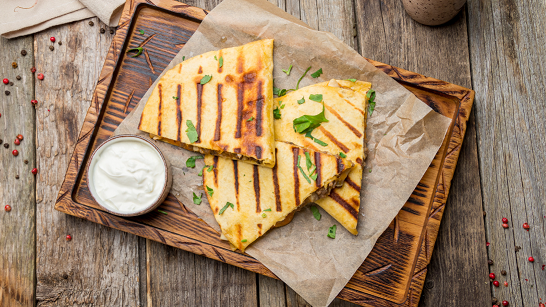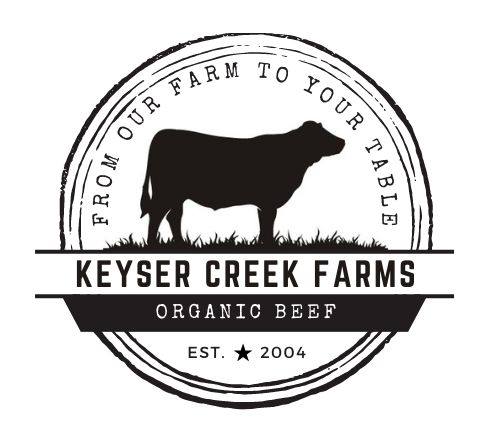A FREE FREEZER?! What's the catch?
We've heard from many people who are interested in purchasing a bulk share of beef that they just don't have storage space... and we figured we could help.
We negotiated a bulk price on freezers with our local appliance store, and now - until our stock is gone - you'll receive a free freezer with your whole or half bulk beef share.
(Currently, the offer is only available to residents of select areas of SW and Central Ontario. Please see the map for labelled areas.)
There's no "catch", you're just in the right place at the right time!
-
BONUS OFFER: Half Beef (Deposit) + FREE FREEZER
Regular price $825.00 CADRegular priceUnit price per -
BONUS OFFER: Whole Beef (Deposit) + FREE FREEZER
Regular price $1,557.00 CADRegular priceUnit price per
The ins and outs of ordering bulk beef
HOW DOES IT WORK?
Choose your share size
Pick the size that works best for you.
*Our individually wrapped cuts will last up to 1yr in the traditional butcher paper. Remember: the whole idea is that you don't have to purchase often!
Because we sell our bulk beef by packaged weight, we guarantee:
- Whole beef = 480lbs
- Half beef = 240lbs
If you have more questions about bulk beef, scroll down for FAQs, or check out our Learning Center for more detailed explanations.
Choose your preferred method of payment
We accept:
- online credit card (Mastercard, Visa)
- online Interac debit
- e-transfer
- cash
We are happy to accept payment information personally over the phone, if you prefer.
**We're not set up with onsite payment options for credit or debit yet. Sorry if this is an inconvenience**
Pay (*aka - Place your Deposit) Q: Why do I put down a deposit?
Your deposit:
- Puts a claim on your beef share (our guarantee to you!)
- Tells us you're all in (your guarantee to us)
YOUR SHARE IS GUARANTEED
The process of getting an animal to the butcher, processed, dry-aged for 14 days, cut and packaged, frozen, and back to our farm can take up to 3-5 weeks. When you put down a deposit - you are putting a claim on that share of beef. That 480lbs or 240lbs of beef is all yours. You don't have to worry someone else will buy it first. No more food shortages in your house!
SHOW US YOU'RE ALL IN
Let's be honest here: we all know that filling your freezer means one of our animals is sent to the butcher.... it's the circle of life. Putting down a deposit is your guarantee that the two years we've put into raising our animals, and the irreversible one-way trip to the butcher, is all for a good cause.
Plus, our farm is built to raise and care for animals. We have lots of pasture and stall space in the barns, but we're not a long term cold storage facility. We have limited freezer space - so, if a steer is going to be processed, we need to ensure that there is a home for the finished product.
That's it? Then what happens
- Receive your confirmation email
- We'll call to arrange delivery
- Pay remaining balance
- We'll deliver right to your door
- Pack your freezer and ENJOY!
+ We'll still be here for you!!
We'll be in touch every step of the way, answering any questions you may have!
We highly recommend getting your beef into your freezer as soon as possible. While it will remain frozen for quite a while, it is a perishable product and should be kept frozen until you're ready to thaw and cook it.
The butcher paper is stamped with the name of each cut, so they are easy to organize and pack away for convenient access.
PLEASE REMEMBER, we're still here! If you have any questions, or issues, we are a phone call or email away. (And you know where we live!)
We are 100% committed to standing behind every order of beef that goes out from our farm - and we want to make sure you're 100% confident in your purchase.
THANK YOU & ENJOY YOUR KEYSER CREEK BEEF!
Where is this offer available?
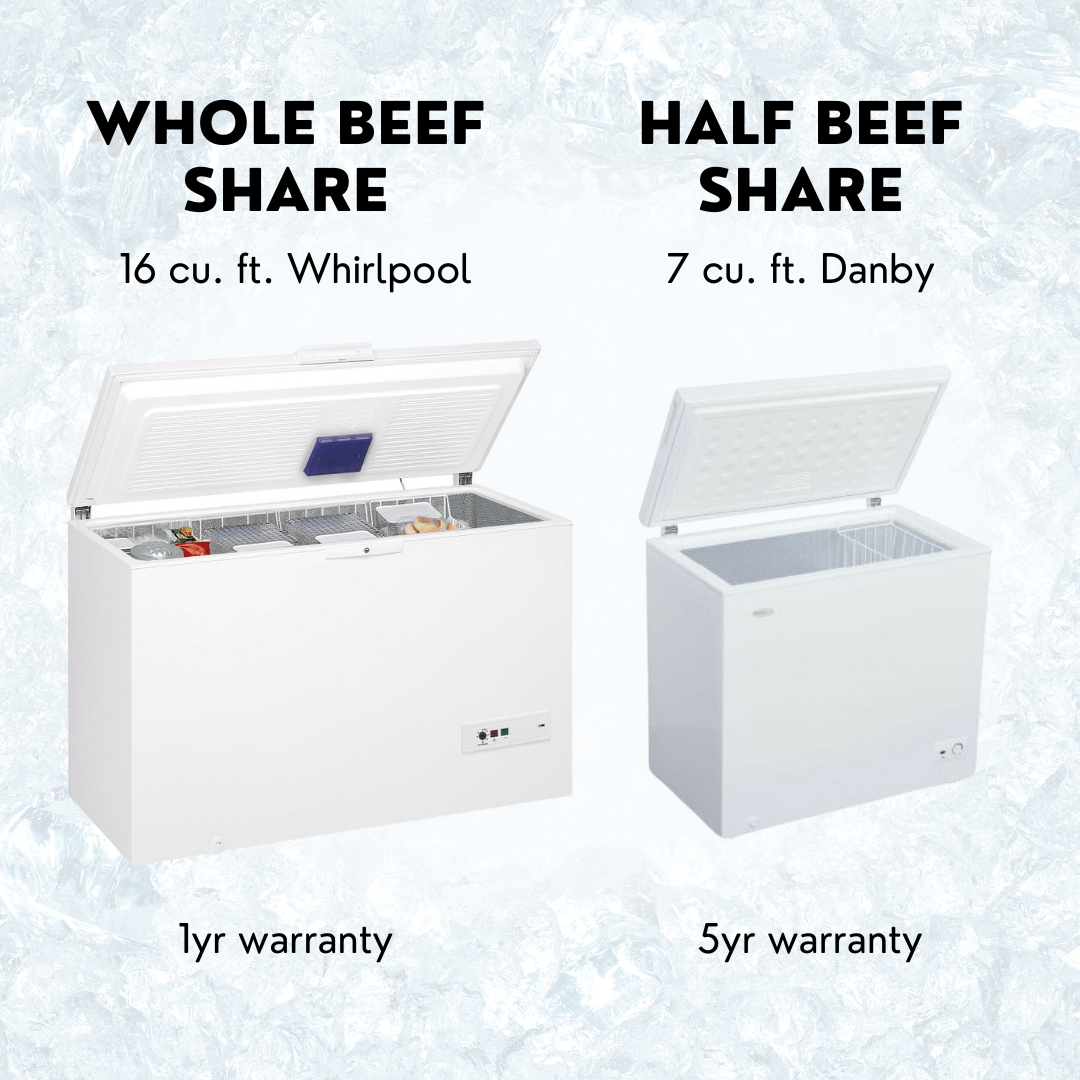
Just the right size
The Whole Beef share is 480lbs of assorted cuts - so the 16 cu.ft. Whirlpool freezer will be just what you need.
The Half Beef share is 240lbs, and fits perfectly into the 7 cu.ft. Danby freezer.
They are sourced locally (so you're supporting two family businesses!), and backed with a full warranty.
Now that's something you can feel good about!
What's the difference?
Pricing Comparison
-
Packaged Weight **what we use**
* also called 'final', 'cut', 'boxed', or 'take home' weight
* after all hanging, cutting and packaging is complete
* only includes retail cuts; bones/organ meat can be added in
* around 60% of HANGING WEIGHT - or 36% of live weight
* typically around $10-13.30/lb -
Hanging Weight
* also called 'carcass weight' or 'dressed weight'
* immediately after steer is butchered
* includes bones
* around 60% of live weight
* typically between $5-8/lb
Why we choose to charge by 'final packaged weight'
Consistent Quality & Price: CLICK HERE TO LEARN MORE
Right now, we're finding that the most important things to people sourcing bulk freezer beef are:
1) Quality
2) Price
Well, we're biased about #1; but in terms of price, the first questions people have are:
* how many pounds of meat will I get?
* what will it cost?
If we were to charge by hanging weight, the answer to both will be... "It depends", and that really does not work for a lot of people. Not everyone has space for an extra 15-20lbs of beef, or another few hundred dollars to spend, when the final invoice comes.
Charging by final packaged weight guarantees consistent and reliable price and product! No surprises.
Also, in our experience to date, we have found that most people are looking to spend their money on packaged cuts of meat, rather than all the additional organ meat, bones, and suet. So, all our bulk shares are offered by weight, and are 100% of the weight and the price you pay is for final beef cuts - like steaks, roasts, and ground beef (not the organ meat, bones, or suet). That being said - if those are important to you, then just let us know!
When bulk beef is sold by hanging weight, the price initially looks a lot cheaper per pound because it hasn't gone through the freezer (which decreased weight due to dehydration), or been carved and packaged yet. This could swing in your favour… or not.
The steer might weigh heavy hanging, but convert to packaged beef poorly if it has a large bone structure or has more fat – so you might ‘overpay’ per pound. On the other hand, you might get a smaller framed animal that carries a lot of meat and ‘dresses’ well - lucky you!
Good or bad, it's 100% unknown.
Honestly, buying bulk beef by hanging weight can just be a bit of a gamble.
It's not a terrible system, and it works for some people - we just think that pricing it by the final packaged weight is a more reliable and consistent approach, so you can see (ahead of time) exactly how much you're getting and what it will cost. No last minute surprises!
Choosing your shipping is easy...
-

DELIVERY
This is a special order - but the cost is still FREE!
No additional delivery charges.
We are excited to be personally delivering these orders in our new trailer - so we will contact you directly to arrange a date and time to deliver your beef and free freezer. -

EXTRA INFO
Shipping MapThis offer is limited to customers in regions of SW and Central Ontario. Please see the labelled map for counties were this offer is available.
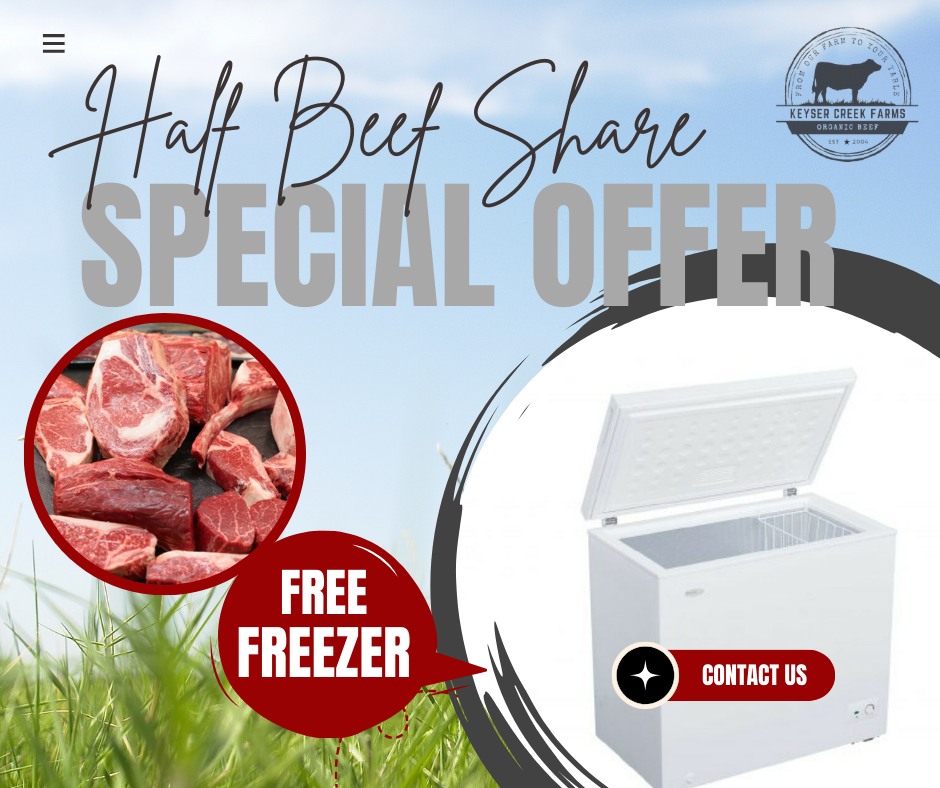
Keyser Creek Farms
BONUS OFFER: Half Beef (Deposit) + FREE FREEZER






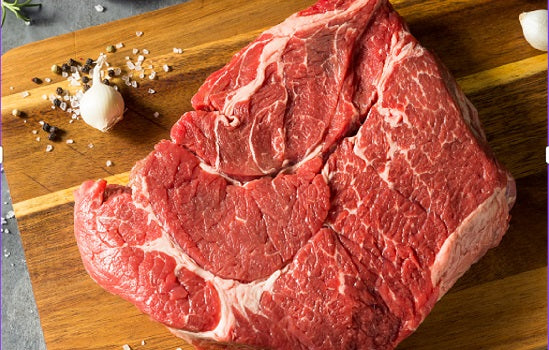
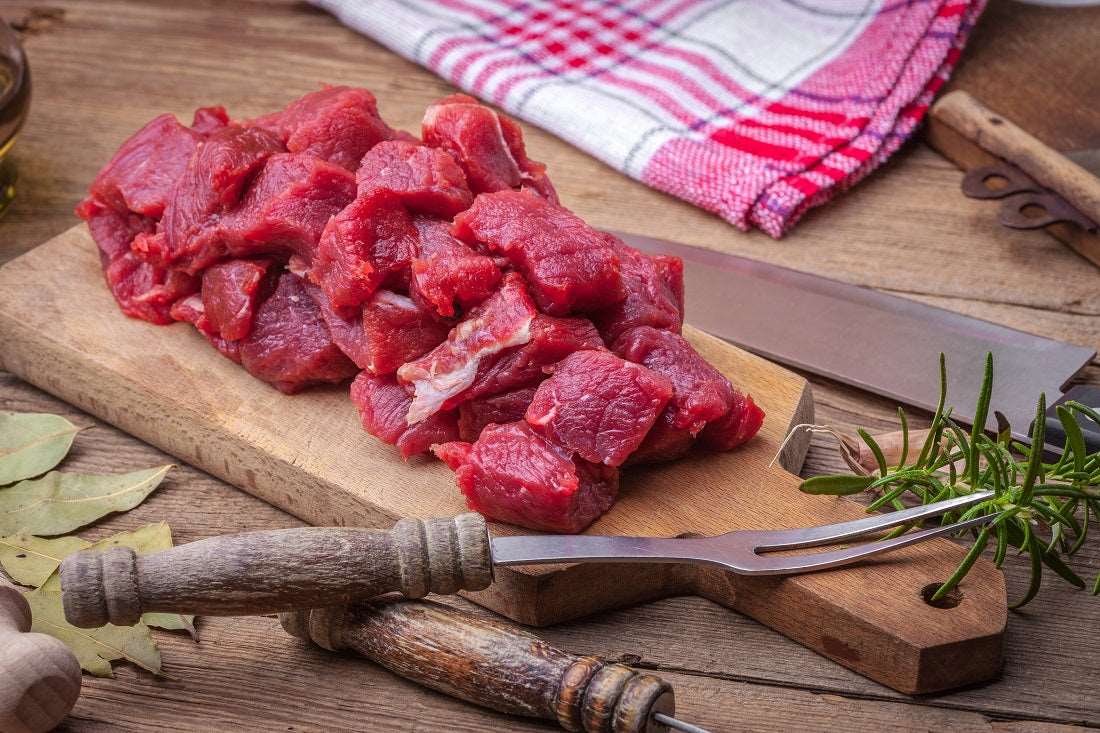

Keyser Creek Farms
BONUS OFFER: Whole Beef (Deposit) + FREE FREEZER

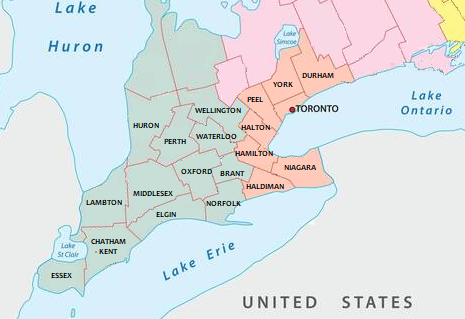

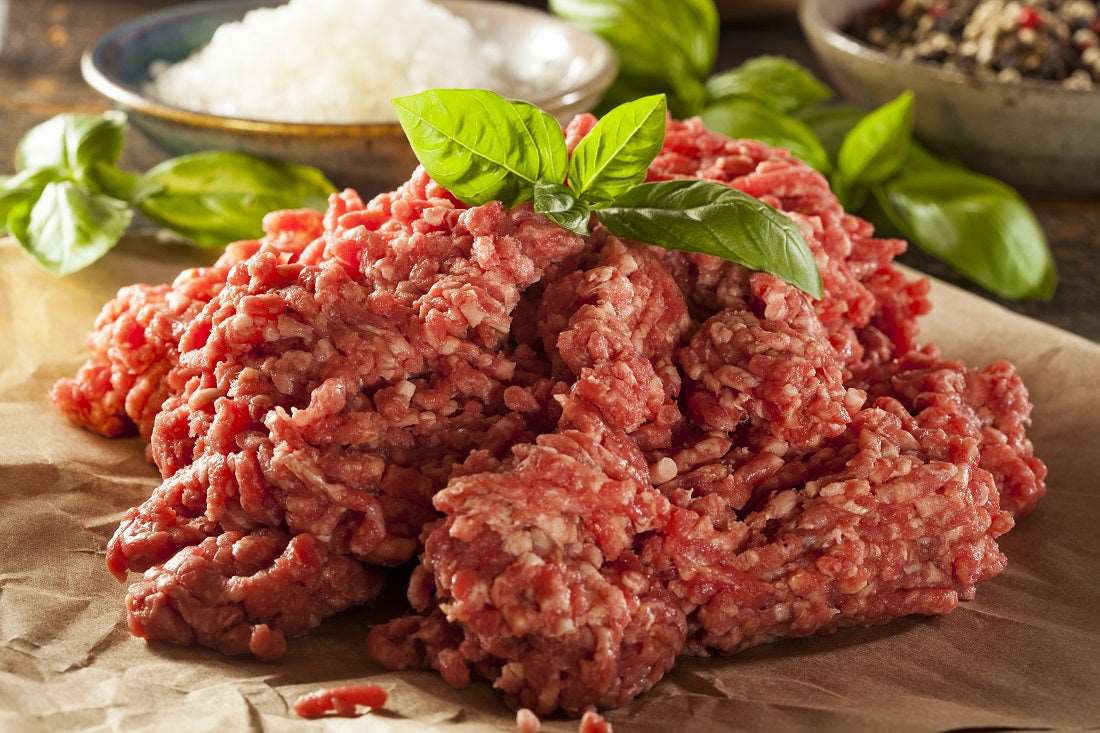
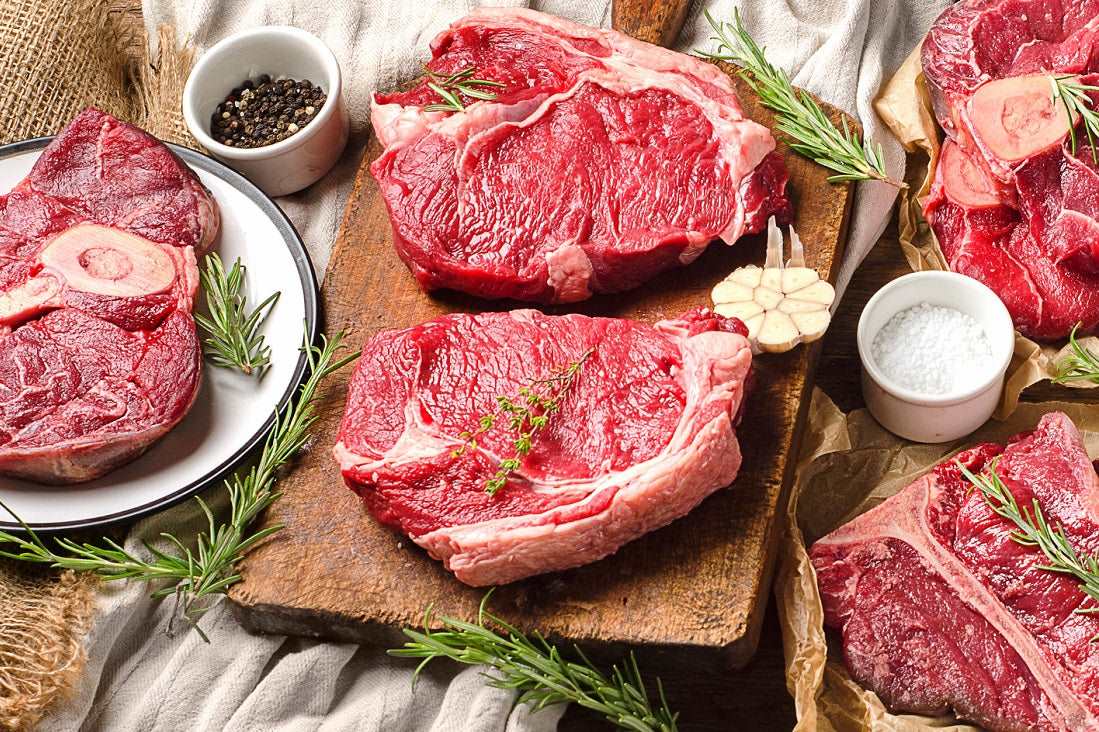
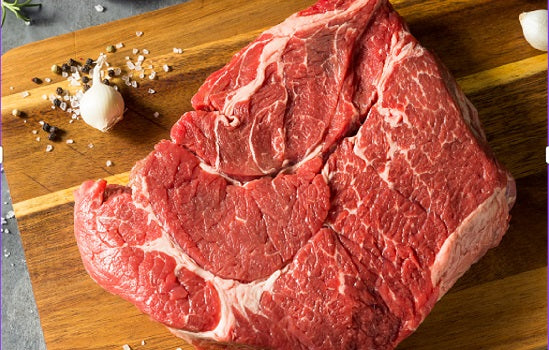

What others are saying....
What everyone asks about bulk beef...
What breed of cattle do you raise for beef?
Our beef is an Angus cross. This means the mama is one breed and the papa is another. In our case, our Holstein dairy cow (remember - we are dairy farmers too!) is bred with Angus... and we get a cross. This actually gives us complimentary genetics of animals that are great at converting their food to energy (Holstein) and using it to put on lots of muscle (Angus).
This might be why our steers 'dress out' about 5% higher than industry standards (aka. we get about 5%+ more meat from our Angus cross than is typical for most organic, grass-fed farmers).
What is the difference between 'grass-fed' & 'grain-fed'?
This is a HUGE topic, and there is tons of research out there about cattle, feed, and meat production. So, this is just a super-basic slice off the steak.
Grass-fed beef is specifically cattle that spend their days grazing on grasses and other forages, along with harvesting these crops and feeding them during the cold winter months.
Grain-fed beef is when farmers feed cattle a grain-based high energy, fattening diet like corn, barley, and soy. The amount of grain is typically between 60-85% of their daily intake during the last few months before they are butchered.
The diet of the animal affects the size, texture, marbling, flavour, and nutrition of the meat!
So, your meat is organic and grass-fed... what does that mean?
ORGANIC: It's not just a buzzword around here. Our farm is certified organic, and accredited by CSI (Centre for Systems Integration), a third-party organization that inspects, audits and enforces federal regulations.
We 100% guarantee our beef:
- has never been treated with antibiotics** or artificial hormones
- is free from vaccines
- has never been fed any GMO, or "bioengineered" food, or feed treated with pesticides, herbicides, or any other '-cides'
** If it was medically necessary to use antibiotics for the well-being of an animal, we would do so; however, we would then sell it to another farm.
GRASS-FED: Our animals are raised in the pasture with Intensive Rotational Grazing principles, and we harvest the same pasture forages for them to eat throughout the snowy months.
We don't claim '100%' grass-fed because we sometimes feed small amounts of corn silage during the winter to help maintain a healthy energy balance. When we do include the silage, the actual grain portion amounts to about 0.5% of their daily ration.
So, we're 99.5% grass-fed... you're welcome to round up if you want! :)
.
How much space would I need for an order of bulk beef?
We'll still answer the question, but DON'T WORRY - BECAUSE WE'VE ALREADY DONE ALL THE CALCULATIONS, AND PICKED OUT PERFECT FREEZERS TO STORE YOUR BULK BEEF SHARE!
RULE OF THUMB: You can fit 35-40lbs of frozen beef in one cubic foot.
So, if you can clear a 12" x 12" x 12" space in your upper compartment freezer - you can order most of our smaller variety boxes. HOWEVER, our larger bulk shares of beef will likely need a chest freezer.
Whole share: 480lbs = 13-15 cubic ft (large deep freezer)
Half share: 240lbs = 6-7.5 cubic ft (medium chest freezer)
Quarter share: 120lbs - 3-4 cubic ft (bottom compartment)
Variables:
- Ground beef packs tight - like books - so you can stack them very efficiently. Our 1lb packages also fit well in most door compartments.
- Roasts are the opposite - their rounded, sloping sides, and non-uniform shapes create gaps in your freezer when packing.
So, if you order a bundle with more roasts, you'll need more space than just buying ground beef.
What is a "mixed" share?
First, a "share" is what we call the portion of the whole carcass that you are buying. For example, a half share means you're purchasing half of an entire beef. Simple.
For comparison, some farms sell LITERAL halves or quarters - like the front or back half, or the front-right quarter or back-left quarter.
The problem with this is that the cuts of beef that come from a steer are not consistent throughout the carcass. For example, the Loin primal is located in the back half - so if you order a quarter, you might get the front-right and miss out on all the striploins or t-bones steaks. Ordering a back half or quarter means you miss out on the ribeyes, though.... Hmmmm.... choices, choices...
Instead, here at Keyser Creek Farms, we sell 'mixed' shares. This means we put all the different cuts into one pot (figuratively speaking), and divide them as evenly as possible into the different shares. That way everyone is coming away with an equal value, and will have an excellent variety of cuts from across the entire beef.
For example, if we get 20 T-bone steaks from a steer, a quarter share would get 5 T-bones, and a half share would receive 10. (As opposed to someone ordering the back half getting all 20 T-bones, and the front sections getting none). Easy math, right... ?
This also allows us to charge an even $12.97/lb for all shares. Otherwise, the price might adjust for particular items - like the quarter or half with the tenderloins would be more expensive, right...?
A mixed share is equal on cut variety, weight, and value - that's how we can guarantee the exact weight and price.
You charge by *packaged* weight...what does that mean?
I'm actually going to give you a couple terms, so you can compare them and keep them straight.
1) Live weight (LW)
This is how much the steer weighs when it walks on the trailer at our farm to head to the butchers.
2) Hanging weight (HW)
(or "Hot Hanging Weight" - HHW)
This is the weight of the cow after the initial butchering is done. The carcass is still 'warm', but the hide and organs are removed, and it's about to be hung up in the freezer. This is sometimes called the 'dressed weight', or 'carcass weight'.
This is typically about 60% of the live weight.
3) Freezer Weight (FW)
Beef hangs in a freezer for, typically, 12-14 days. During this time, it dehydrates, and often loses 3-5% of the hanging weight.
4) Packaged Weight (PW)
The first step is to cut the main frozen sections into the 8 main 'primal cuts'.
This is where the true craftsmanship of the butcher takes the primal cuts and turns them into the delicious steaks and roasts we enjoy!
This means trimming off excess fat, gristle or cartilage, and deboning certain cuts.
This process will drop the final product to about ~70% of the freezer weight - or ~40% of the original live weight of the steer.
What is the actual difference between hanging weight and packaged weight? Can you give me an example?
First, please understand that this is just a super simple example with nice round weights. These numbers change with EVERY SINGLE steer. Difference in live weight alone could be due to the age, genetics, diet, and 'lifestyle' of each animal. (Yes, some are just lazy)
- Let's say the steer goes in at 1000lbs live weight.
The dressing percentage for grass-fed beef is, as an industry average, somewhere between 53-58%. Our animals have typically been 'dressing out' at 65%! So for easy figuring we'll just take 60% - which means 600lbs 'dressed weight' on the hooks.
How well a steer 'dresses out' can change slightly due to how heavily boned the animal is, or even if it just ate a lot before getting on the trailer. - From here, the hooks hang in the freezer for 12-14 days. The dehydration concentrates the flavour, and tenderizes the meat. The weight loss at this stage is around 3-5 %. (We'll use 5% for simple numbers) So, the carcass goes in the freezer at 600lb, but comes out at 570lbs.
- Next, the butcher takes the sides of beef and cuts them down into the ''primals".
The final packaged weight has quite a bit of variation depending on what cuts the butcher takes out, or the buyer requests.
For example - if the buyer (us, the farmer - or you, the end customer) wanted everything boneless... well! That's a huge weight difference! Do you want T-Bone steak, or tenderloin and striploin steaks? It could decrease your final packaged weight as much as 20% of the hanging weight if you go completely boneless. (For this example, that could be up to 120lbs!!)
At the end of the day the typical packaged weight is approximately 40% of the original live weight of the cow; but as you can see, there's LOTS of room for variation.
So, here's the recap:
Live weight: 1000lbs
Hanging weight: 600lbs
Freezer weight: 570lbs
Packaged weight: 400lbs
There is a lot of variability between the live weight, hanging weight, and packaged weight; if you want a great in-depth explanation check out this resources from the Institute of Agriculture and Natural Resources (University of Nebraska-Lincoln): How Many Pounds of Meat Can We Expect From A Beef Animal? | UNL Beef
When you order a share of beef from use here at Keyser Creek Farms, the final packaged weight ONLY includes the retail beef cuts. It does NOT include bones, organ meat, or suet. If you are interested in these options being included in your share, that's not a problem - let's talk!
100% Customer Satisfaction GUARANTEED
Healthy, happy customers.
Ultimately, that's what it's all about. Day in, day out - our family works hard to create a product that we're proud of and we'll stand behind - 100%. We truely believe in the quality of our beef, so if there's a problem with your order, we guarantee we'll make it right!
